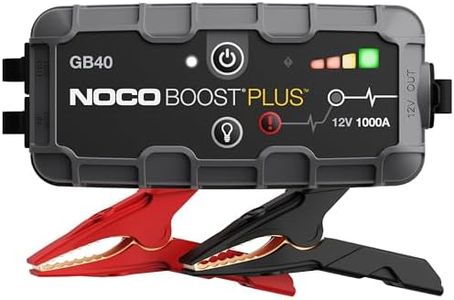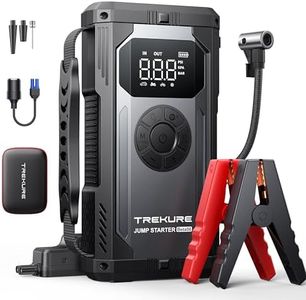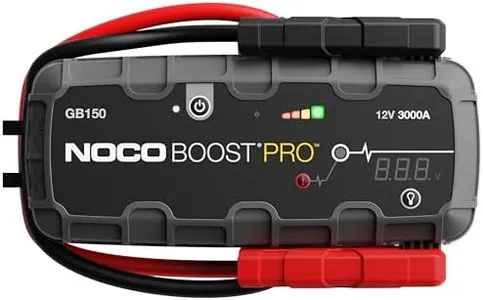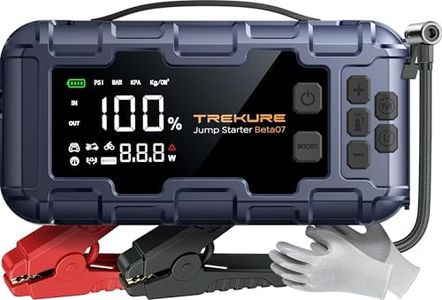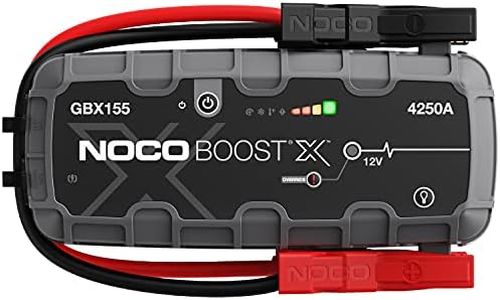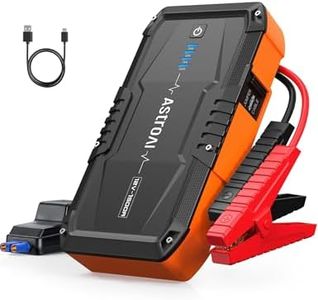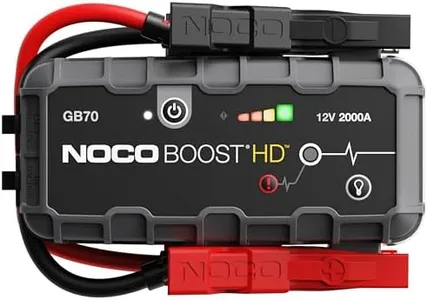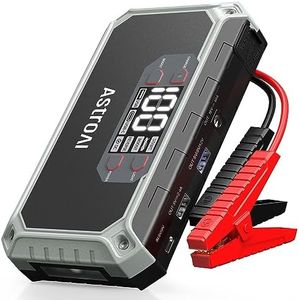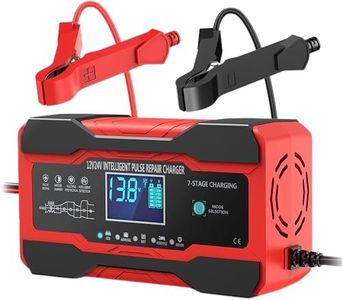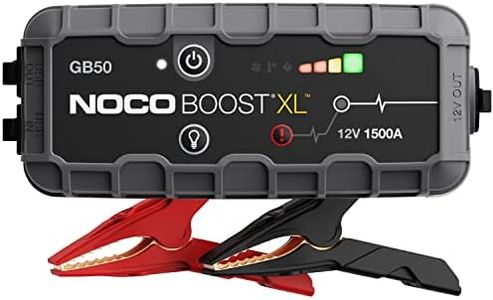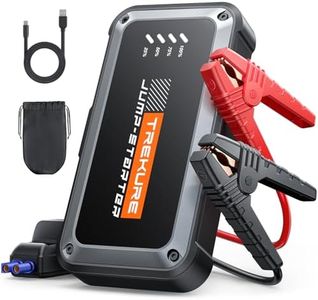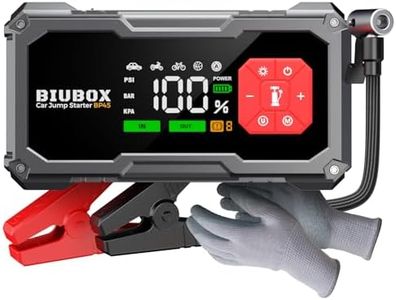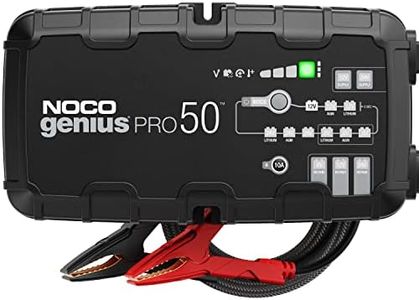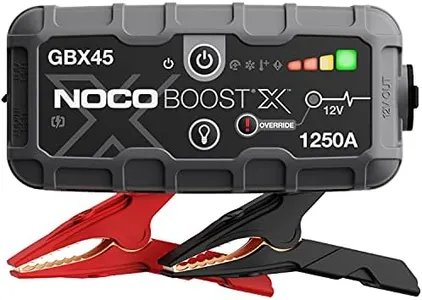We Use CookiesWe use cookies to enhance the security, performance,
functionality and for analytical and promotional activities. By continuing to browse this site you
are agreeing to our privacy policy
10 Best Battery Charger And Jump Starter
From leading brands and best sellers available on the web.By clicking on a link to a third party's website, log data is shared with that third party.
Buying Guide for the Best Battery Charger And Jump Starter
Choosing the right battery charger and jump starter can make a big difference in how you handle car battery troubles, especially in emergencies. These devices help you recharge a weak or dead battery or jump start your vehicle when needed. To find the best fit, you need to review some key specifications that determine the device’s performance, safety, and compatibility with your vehicle.Amperage OutputAmperage output tells you how much current the device delivers to the battery. Higher amperage lets you charge or jump start your battery faster, but it's not always necessary to pick the highest number. Lower-amperage chargers (2-10A) are ideal for slow, gentle charging (also called trickle charging), great for battery maintenance or smaller vehicles. Medium (10-30A) works for regular vehicles and moderate charging speed. Higher amperage (over 30A or jump starters with several hundred amps) is suitable for quick jumps or for larger vehicles like trucks or SUVs. Assess your needs—if you want quick starts and have a larger vehicle, aim for higher amperage, but for maintaining a battery or charging smaller batteries, lower amperage is safer and sufficient.
Voltage CompatibilityVoltage compatibility ensures the charger or jump starter matches your battery’s voltage. Most cars use 12V batteries, while motorcycles may use 6V, and larger vehicles or commercial trucks might require 24V. Make sure the device you choose matches your battery’s voltage—some chargers offer multiple voltage settings, which adds flexibility if you use it across different vehicles. Matching this correctly helps protect your battery and the device, so always check your vehicle’s battery voltage before buying.
Type of Battery SupportedModern vehicles may use different battery types such as lead-acid, AGM, gel cell, or lithium-ion. Battery chargers and jump starters are often designed to work with specific battery technologies. Using the wrong type can be ineffective or even dangerous. When choosing, verify that the product supports your battery type by checking your vehicle’s manual or battery label, and looking for matching support in the product information.
Safety FeaturesSafety features in chargers and jump starters are crucial to protect both you and your vehicle. Common features include reverse polarity protection (prevents sparks if you attach clamps incorrectly), overcharge protection (prevents damage from charging too long), and short circuit protection. Some devices may have spark-proof technology. If you’re not experienced with batteries, or want extra peace of mind, prioritize a charger or starter with strong safety features.
Portability and SizePortability refers to how easy it is to carry and store the device. Jump starters come in both compact, lightweight types that fit in your glove compartment and larger, heavier models designed for garage use. Smaller units are convenient for on-the-go emergency use, while larger units may offer more power or additional features. Think about whether you want to keep it in your car for emergencies or use it mostly at home, then select size and weight accordingly.
Additional FeaturesMany chargers and jump starters offer extras like a built-in flashlight, USB charging ports, air compressor, or digital display. While these aren’t essential, they can add convenience, especially if you travel frequently or want to use the device for more than just battery help. Prioritize features that match your lifestyle—for example, a flashlight can help at night, and USB ports can be handy for charging your phone in an emergency.
